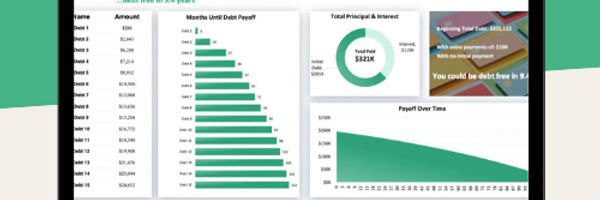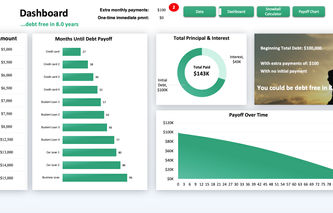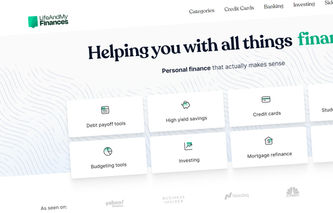Building credit is like taking a road trip with your kids. Are we there yet? Not yet. What about now?
In this analogy, you might be the child—just starting your credit journey, impatient to reach your destination. And the way ahead seems long and bumpy.
Buckle up—it’ll take you from one to six months to get there. Our guide is like a GPS—here to make your trip as smooth as possible.
You’ll learn:
How fast can you build credit? Go from zero to hero.
When do you get a credit score? Everything you need to know about these three digits.
Tips on building credit in record time.
Why fixing bad credit is a grueling process, and how to make it smoother.
Similar articles:
Understanding Credit Scores
The Earth orbits the sun—and our country revolves around credit. Want to buy a house? Check your credit. Renting a car for your road trip? Credit. Looking for cheaper insurance? You guessed it—credit.
Your credit score is a three-digit number that shows your credit history and predicts your future credit behavior. There are two main models for calculating credit scores: FICO and VantageScore. Almost 90% of credit issuers use FICO to check your “creditworthiness”.
Would you like to join the 44% of adult Americans who have prime credit scores and enjoy the lowest interest rates and the coolest benefits? You have to answer a million-dollar question first.
Do you start off with good credit?
What credit score do you start with?
Zero
300 (the minimum)
716 (the average)
No credit
Your palms sweat, you are not sure what the right answer is. You press (d) with your shaking hands. Your answer turns green—we have a winner! Indeed, contrary to popular belief, you don’t start with a zero, nor with the lowest score of 300—you start with a blank, no credit, a void, nothing.
How long does it take to get a FICO score?
It takes about six months to generate your first FICO score. To get it, you’ll need:
At least one account open for six months and counting.
An account reported to one of the three credit bureaus in the past six months.
No “dead souls” as authorized users on your account (no mark of “deceased” on your report).
VantageScore is different. You’ll get it after about a month. Mouth-watering for newcomers—but remember, it’s a lot less popular option than FICO among financial institutions. The real question, though, is not how quickly you can get a credit score—but how long it takes to build good credit.
Good credit score: what is it?
What is good credit, anyway? Both credit score models use a scale that goes from 300 to 850. FICO score is like this:
Exceptional: 800–850
Very Good: 740–799
Good: 670–739
Fair: 580–669
Poor: 300–579
FICO’s 2022 report says the average credit score in the US is surprisingly high at 716—already in the good range—but you want to climb this mountain of credit, and end up in one of the top two categories. How do you do that?
Read more:
Factors to focus on when building credit
FICO scores look at five specific areas when checking your credit report. If you want to achieve good credit, you should know what they are.
1. Payment history (35%)
The key factor is definitely your payment history—the record of all payments on your credit cards, installment loans, mortgages, and other debts. Be late on them, and you’ll be at risk. Miss a payment for 90 days, and your score can easily drop by 170 points.
Bankruptcies and lawsuits can send your your score into free fall. Your lender wants to be sure that you’ll pay them back. The best way to predict that is by looking at how you repaid debts in the past.
Check out our credit card payoff calculator and other cool personal finance products.
2. Amounts owed (30%)
The second most important aspect is your current unpaid debt—the amounts you owe in total and on each of your active accounts. What matters is also your credit utilization ratio (your current balance as the percentage of your total credit line).
If your credit limit is $5,000, and your balance is $1,500—the credit utilization rate is 30%. In fact,30% is the recommended maximum for your credit utilization. Anything above that number will damage your score.
3. Length of credit history (15%)
The longer you have your account, the higher you can score in this category. If you have multiple accounts, the length of the oldest, the mean age of them all, and the age of the youngest will play a role. Your credit history should age like fine wine—don’t close your older accounts without a good reason.
4. New credit (10%)
When you apply for a brand-new credit card or a loan, the issuer will typically ask to check your credit report. This is a hard inquiry on your credit—it’ll stay on your report for two years. Luckily, FICO only cares about the past 12 months. If you open many new credit accounts in a short time span, you’ll harm your credit score.
5. Credit mix (10%)
This simply means how many types of credit you are juggling at the moment. There are two types of credit accounts:
Revolving accounts (credit cards, store cards, and so on)
Installment accounts (mortgages, student loans, and other types of loans)
You don’t need to get every single loan and card—covering these two broad areas in some capacity should be enough.
How Long Does It Take to Build Credit from Nothing?
As much as you want to Usain Bolt this race, building credit is a marathon. You already know it takes at least one to six months to generate your initial credit score.
How long does it take to get a 700 credit score? What about 850?
Or— in other words—how long does it take to get good and perfect credit? If you’re a beginner, 700 is an easy goal to achieve—follow the best practices, and it’ll take you from six to eight months to get there.
If you’re an overachiever who aspires to break into the exceptional category, your success depends on what’s keeping you behind. Don’t max out your credit cards—do max out those five categories FICO uses to calculate your score.
Say you’re new to credit—it might take you over a year and a half to reach perfection, simply because your credit account is so new. If you’re only using one type of credit, you can diversify your credit mix by opening a new type of credit account (for example, by taking out an installment loan when you only use credit cards). It’ll take your credit score at least six months to start rising afterward.
How long it takes to get your credit score from X to Y: the complete timeframe
If you want to look up how long it’ll take you to go from your current score to the desired one, here’s our cheat sheet with all estimated timeframes.
INITIAL CREDIT SCORE | AVERAGE TIME TO REACH 700 CREDIT SCORE | AVERAGE TIME TO REACH 750 CREDIT SCORE | AVERAGE TIME TO REACH 800 CREDIT SCORE | AVERAGE TIME TO REACH 850 CREDIT SCORE |
|---|---|---|---|---|
New to credit | 6–8 months | 8 months to 1 year | 1–1.5 years | 1.5+ years |
300 | 2 years | 2–3 years | 3–4 years | 4+ years |
350 | 1.8–2 years | 2–2.5 years | 2.5–3.5 years | 3.5+ years |
400 | 1.5–1.8 years | 1.8–2 years | 2–3 years | 3+ years |
450 | 1.2–1.5 years | 1.5–1.8 years | 1.8–2 years | 2+ years |
500 | 1–1.3 years | 1.3–1.5 years | 1.5–1.8 years | 1.8+ years |
550 | 1 year | 1–1.3 years | 1.3–1.5 years | 1.5+ years |
600 | 8 months | 1 year | 1–1.3 years | 1.3+ years |
650 | 6–8 months | 8 months to 1 year | 1–1.2 years | 1.2+ years |
700 | – | 3–6 months | 6–9 months | 9 months to 1.2 years |
750 | – | – | 3–6 months | 6–9 months |
Keep in mind these timeframes are rough estimates. The time it’ll take you will depend on many factors—each case is individual.
Fastest Ways to Build Credit
There’s a simple algorithm for how to start building credit—but we want to share our tips on how to raise your credit score extra fast.
Get a secured credit card
Getting a traditional credit card with no prior credit history is hard. Ever applied to an entry-level job that requires five years of experience? You know the drill.
In order to qualify for a good credit card, you already need to have good credit. That’s where secured credit cards come in. They are low risk for the lender because you need to put down a cash deposit to use them. If you don’t pay back what you’ve borrowed, you simply won’t get your security deposit back.
Treat secured credit cards as a temporary fix that’ll help you build up credit and move on to superior cards. We recommend Secured Chime Credit Builder Visa® Credit Card (no annual fees, no credit check to apply) as your first taste of secured credit cards.
The Chime Credit Builder Visa® Card is issued by Stride Bank, N.A., Member FDIC, pursuant to a license from Visa U.S.A. Inc. and may be used everywhere Visa credit cards are accepted.
Apply for secured Chime Credit Builder Visa Credit Card once you sign up for a Chime Checking Account and receive a qualifying direct deposit of $200 or more. See https://www.chime.com/ to learn more.
Apply for an alternative credit card
Secured credit cards are great—but what if you can’t afford to pay the deposit, or simply don’t want to pay anything upfront? Fortunately, there are other starter credit cards where you don’t have to do that. Check out our list of the best unsecured credit cards for our suggestions.
If you are in college, student credit cards are a fantastic opportunity to start building credit. Unlike regular credit cards, they’re less strict with their requirements, while offering competitive rewards and introductory benefits.
Become an authorized user (on somebody else’s card)
Nepotism can sometimes be good, actually. If your parents, other family members, or close friends are in good standing credit-wise, you can ask them for a piggyback ride to your first credit. They can simply put you as an authorized user on their—ideally, oldest—account.
Double-check that their issuer reports authorized users to credit bureaus, and you’re all set. The best thing is that you don’t even need to use their account (even though you can make charges on their card from now on as an authorized user).
Increase your credit limit
Subprime credit cards are notorious for their low credit limits. You can’t do much with $300 in this economy.
Many credit card companies are open to increasing your credit limit if you remain in good standing and pay your bills on time—some may even periodically review your account and raise your limit automatically.
If your lender doesn’t do it, don’t be shy—go ahead and ask for it. A bigger credit limit equals a much lower utilization ratio (if you don’t change your spending habits).
For example, $200 with the above limit gives you a 67% ratio (which means you’re in trouble)—but if your credit limit is, say, $2,000, you only use 10% of your credit line, and you’re still on track.
Get a credit-builder loan
The advice until now was all about revolving credit—but you could also look into installment loans to hit those credit mix points. These are similar to credit cards in the sense that they also depend on your credit history.
Credit-builder loans are exactly what they sound like. They’re loans designed for people who have little-to-no credit history so they can build credit fast. They're pretty peculiar—small(ish) (up to $1,000), short-term, and won't give you any money upfront. The lender will deposit it into a locked savings account instead—and you can access it as soon as you repay your loan in full.
On the bright side, your payments get reported to the credit bureaus—so you build and improve your credit easily. The designated term for these loans is usually 12 months—so you have plenty of time to raise your score.
Use a co-signer for a personal loan
Just like secured credit cards, credit-builder loans aren’t for everyone. If you don’t have the history to back you up during your application process, you can use a co-signer who will vouch for you. Mind you, this person should have good credit to qualify. They should also keep in mind that they agree to pay off your debt if you won’t.
How Long Does It Take to Repair Your Credit?
Rome wasn’t built in a day—it takes months to establish credit from scratch, and you can undo all your hard work quickly if you stop making payments. How long does it take to repair credit after a stumble?
Hard to say, but one thing is clear—it takes much longer to fix your score than to build it from the ground up. Everything depends on how far behind you’ve fallen. What’s killing your credit score?
Do you miss your payments?
Are you in debt?
Are there any negative marks on your credit report?

Lay out your credit card debt with the minimum payments and interest to see how long it will take to pay off!
What you will get:
Interactive dashboard
Customizable to your needs
Stay on track with charts and graphs
Suitable for up to 16 or 32 debts!

How long will negative marks appear on your credit report?
Derogative marks can haunt you for years like the ghosts of your (sloppy) credit past. Lenders are suspicious people—when they investigate your report, they don’t want to see any abnormal activity.
Let’s check for how long the sins of your past will come back to bite you (seven years of bad luck isn’t just a saying!)—
NEGATIVE MARK | WHAT IT IS | TIME ON YOUR REPORT |
|---|---|---|
Hard inquiry | Credit issuer checks your report when you apply for new credit | 2 years |
Student loan default | When you don’t make scheduled payments for a number of days, your debt goes in default and all interest is due right away | 7 years |
Account charge-off | If you don’t repay the debt on your account for six months, your lender could close your account for future charges | 7 years |
Civil judgment | You are required to pay damages after losing your civil lawsuit | 7 years (may be renewed for another seven years when unpaid) |
Foreclosure | If you fall behind on your mortgage payments, your bank might put your house on sale | 7 years |
Missed payment (delinquency) | Delinquency happens when you don’t make your payment for 30+ days | 7–7.5 years |
Bankruptcy | If you are completely unable to repay your debt, you can declare bankruptcy in federal court—your debt will be discarded | 7–10 years |
Recovery times can be significantly shorter—for example, hard inquiries will stay on your report for two years, but credit card companies often only count them for a year. You can potentially recover from late payments in a couple of years, too.
Strategies to fix your credit quickly
You should strive to minimize the recovery period and bounce back as quickly as possible. There are some tricks that can help you rebuild your credit faster.
Dispute errors on your credit report
Always read your credit reports carefully. There are three credit bureaus that produce them—Equifax, Experian, and TransUnion. Check if none of the three reports have any errors. You should dispute any potential errors with each credit bureau individually, and also contact your bank (or credit card provider) that supplied the inaccurate information to the bureaus.
You can contact them online, by phone, or by mail. You need to include your personal information and say why you consider the info faulty—they have 30 days to respond. If you’re cleared and the mistakes are fixed—voilà, your score will go up as well.
Pay off existing debt
The average credit card debt in 2022 is $5,221—and 55% of Americans carry a balance from one month to the next. Your payment history and credit utilization ratio are the two main factors that affect your score.
You should target those two factors first if you want to improve it—specifically, you need to pay off your debt as fast as possible. If you struggle with repayments on more than one balance, there are two methods for handling that—
Debt snowball method (you pay off the smallest debt first to create the momentum)
Debt avalanche method (you repay the debt with the highest interest first to minimize the total amount you have to pay back)
Don’t apply for multiple new cards
We get it—applying for ten credit cards (or loans) at once is tempting. After all, this would introduce variety to your credit mix, and dramatically increase your credit limit (credit utilization could drop by 90% right away, too).
But that would be a costly mistake—and your credit score could suffer. Don’t bite off more than you can chew. Only apply for the credit you need and will actively use.
Tips to maintain good credit long-term
Building credit is like training for a half marathon—keeping it is like running an ultra distance. The only way to make sure your credit remains high is to stay financially responsible and learn the best credit-building practices—the first three in this list will cover about 65% of what FICO counts towards your score.
Use your credit cards. It might sound strange, but the first piece of advice is to use your card—at least from time to time. Your activity needs to be reported to the credit bureaus—and it’s hard to report something that doesn’t exist.
Make payments on time. Avoid delinquencies at all costs, or it’ll cost you.
Pay your bills in full. Nothing helps your credit score as much as simply not carrying over any balance.
Apply for new credit sporadically. Don’t lower your score with unnecessary applications—and don’t take out loans you cannot repay.
Keep your current accounts open. Don’t cancel your existing credit cards—it might seriously reduce your credit history length. Only consider this option if your card charges high annual fees.
Check your credit reports. You want to keep track of where you stand—and make sure there are no derogatory marks on your report (especially by mistake).
Set up autopay. This could work for you if you have too much on your plate, and frequently forget to make payments on time (in contrast with being unable to pay off your balance).

Lay out your credit card debt with the minimum payments and interest to see how long it will take to pay off!
What you will get:
Interactive dashboard
Customizable to your needs
Stay on track with charts and graphs
Suitable for up to 16 or 32 debts!

The Bottom Line
It'll take you roughly six months to build credit from scratch—and a lot longer to make it good. There are plenty of tricks you can use to build credit faster—like getting a secured credit card or becoming an authorized user on your rich auntie’s account.
So, that’s it when it comes to personal credit. Business credit is a story for another day. Find out how to build business credit if you are ready to turn your side hustle into a business.
I guess you’re ready for the trip of a lifetime now. Good luck and bon voyage!



.jpg)



